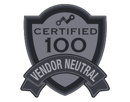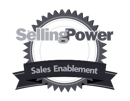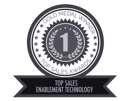
How Your Sales Process Impacts Your Customer Relationships, According to Research
Recently, Jim Dickie and Barry Trailer, co-founders of Sales Mastery Advisors, put out a report that represents a level of study that I find to be rare in the sales industry nowadays.
Their 2024 Sales Performance Scorecard Study Key Trends Analysis is a dense analysis of sales trends based on data from hundreds of sales management, sales operations, revenue management, and sales enablement professionals.
One of the biggest takeaways from the research for me is their 2024 Sales Performance Scorecard (SPS) Matrix, in which they compare the level of an organization’s customer relationship with the levels of their sales process.
To explain the scorecard, the report explains what the levels mean and the impacts that companies are experiencing at the different levels.
How They Defined Levels of Sales Process
For the purposes of the study, Dickie and Trailer defined the levels of sales process like this:
- Level 1 – Ad hoc: Each sales professional decides the best way to engage with customers.
- Level 2 – Informal: Sellers are trained in recommendations on how to engage customers, but they are not enforced.
- Level 3 – Formal: There is a defined process for engaging customers that sellers are certified on, and sales managers reinforce.
- Level 4 – Agile: There is a structured sales process supported by CRM and analytics to continually monitor when and how the process needs to evolve to adapt to changes in the marketplace.
- Level 5 – Customized: Leveraging artificial intelligence, recommendations are provided to sellers for how to customize the structured process to individual sales situations, and the process is proactively modified based on sales success metrics.
While I might divide them differently, I agree with their categorization. I think of these levels as levels of sales process maturity. An immature sales organization will use a level 1, ad hoc sales approach. It can be effective in the short term with a few “superstar” salespeople on the team, but it’s not sustainable or scalable. A highly mature sales organization will be at least level 3, formal, and better even at level 4, agile or level 5, customized.
How They Defined Levels of Customer Relationship
Dickie and Trailer describe the levels of customer relationship in this way:
- Level 1 – Transactional Vendor: An accepted, but not necessarily unique, provider of products/services.
- Level 2 – Preferred Supplier: The recognized lead vendor of products/services in their marketplace.
- Level 3 – Solution Consultant: Providing customers with the support services and insights needed to optimize the use of the products/services they sell.
- Level 4 – Strategic Collaborator: Working directly with clients regionally or globally, joining forces to help customers meet their key business objectives.
- Level 5 – Trusted Co-creator: The selling organization’s company is a recognized Co-creator of solutions with clients that achieve both firms’ current and long-term business visions.
It was interesting to me to see the high correlation between sales process maturity levels and customer relationship levels. Companies with level 4 or 5 sales processes experience much higher levels of customer relationships, and the inverse is also true. Those with level 4 and 5 processes are almost never seen as transactional by their customers, while those at level 1 are almost never seen as strategic collaborators or trusted co-creators.
Companies who achieve the strategic collaborator and trusted co-creator levels of customer relationship, not surprisingly, see much higher win rates, profitability, and revenue growth, as well as better “stickiness” with their customers.
I was delighted to see this cold, hard evidence that your structured, strategic, dynamic sales process directly correlates to how your customers view you and the effectiveness of your sales team.
Performance Is Substantially Improved by Level 4 and 5 Sales Process
The study dug in to analyze the direct impact that levels of the sales process have on performance.
A structured and dynamic sales process has a direct and profound impact on your win rates.
Companies at level one experience lower performance both at the salesperson and the organizational levels. For these organizations, win rates average around 42% (compared to 52% for companies at level three). Level one companies also experience turnover rates of about 32% (compared to 17% for companies at level three). Additionally, there is a salesperson quota attainment gap of 35% to 59% between level one and level three organizations.
When segmenting the data based on sales process, firms with a level 3, 4, or 5 sales process have a higher conversion rate at each stage of the sales cycle than those with level 1 or 2.
Structured Sales Process Increases Win Rates by 8%
One big take-away is confirmation of what we’ve been saying at Membrain for a long time: A structured sales process has a direct and profound impact on your win rates. According to the study, companies with a structured sales process increase their win rates by about 8% over those with informal or ad hoc processes.
In good news, more companies are using a structured process than previously, and 2024 shows the first uptick in leads converting to initial discussions in eight years. This is only one year’s numbers, but it’s 38% overall versus 25% last year. I’m pleased to see this improvement, after a long time of declining performance numbers across the industry.
Engaging Key Stakeholders Is a Big Win for Formal Sales Process
For B2B sales, engaging key stakeholders is essential. When sellers are able to position the full value of their offerings directly to relevant stakeholders, they don’t have to resort to discounting in order to close deals, and they’re better able to bring the sale to a winning conclusion. Dickie and Trailer’s research confirms this and suggests that the best way to make that possible for salespeople is through a formal sales process.
As a whole, the study prompts sales leaders to reflect on the maturity of their sales process and its impact on their performance.
The study is extensive, detailed, and insightful. I’ve covered only a few salient points here and could write another ten blogs covering other aspects. If you’ve read the whole report, I’d love to hear what stood out most for you.

By George Brontén
George is the founder & CEO of Membrain, the Sales Enablement CRM that makes it easy to execute your sales strategy. A life-long entrepreneur with 20 years of experience in the software space and a passion for sales and marketing. With the life motto "Don't settle for mainstream", he is always looking for new ways to achieve improved business results using innovative software, skills, and processes. George is also the author of the book Stop Killing Deals and the host of the Stop Killing Deals webinar and podcast series.
Find out more about George Brontén on LinkedIn







